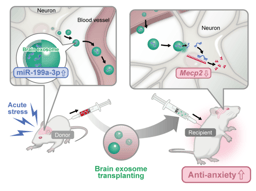Transforming diabetes management: the adoption of technology as a game changer in diabetes care
Published in General & Internal Medicine
In recent years, we have witnessed a remarkable evolution in the management of diabetes, ushering in a new era of treatment that incorporates advanced technology in the management of disease. The adoption of continuous glucose monitoring (CGM), insulin pumps, smart pens and, especially, AI-powered closed-loop solutions has fundamentally changed the way we approach diabetes care. We are hereby delving into the transformative effects of these innovations on diabetes management.
CGM has revolutionized diabetes management by providing real-time data on blood glucose levels. For individuals with diabetes, this means a significant shift from traditional fingerstick measurements to continuous monitoring. The impact of CGM on both people with diabetes and healthcare professionals cannot be overstated. For healthcare professionals, CGM has offered invaluable insights into patients' glucose trends, facilitating more personalized and effective management plans. This allows them to make data-driven decisions and adjust therapies promptly. Moreover, this helps improving patient adherence to treatment. For individuals living with diabetes, CGM is a game-changer. It not only provides a continuous stream of glucose data but also predictive alarms, alerting users to potential high or low glucose levels before they become critical. This has contributed to better glycemic control, fewer hypoglycemic events, and improved overall quality of life.
Continuous insulin infusion devices (insulin pumps) have been a crucial part of diabetes management for many years, offering precise insulin delivery and reducing the need for multiple daily injections. Today's insulin pumps have evolved to be more user-friendly and feature-rich, providing greater flexibility and control. For healthcare professionals, insulin pumps enable a more individualized approach to insulin therapy. By fine-tuning basal rates and offering different bolus options, patients can better mimic the body's natural insulin production. Healthcare providers can work closely with patients to customize their pump settings, helping them achieve better glycemic control. For people with diabetes, insulin pumps not only enhance insulin delivery but also foster a sense of empowerment. The freedom to manage insulin dosages and infusion rates, especially during meals or exercise, empowers individuals to lead more flexible lives. Reduced daily injections and the option to receive insulin discreetly via the pump also contribute to enhanced quality of life.
Nevertheless, perhaps the most exciting development is the integration of artificial intelligence (AI) into diabetes management. Closed-loop systems, often referred to as the "artificial pancreas", combine CGM and insulin pumps with sophisticated AI algorithms to automatically adjust insulin delivery based on real-time glucose levels. This innovation resulted in a big step towards improved glucose control and reduced risk of severe hypoglycemia. For healthcare professionals, AI-powered closed-loop solutions represent a paradigm shift in diabetes management. These systems continuously analyze glucose data and make real-time adjustments to insulin delivery, significantly reducing the need for an external intervention. They allow healthcare providers to focus on refining the system's parameters and troubleshooting, rather than routine insulin adjustments. For individuals with diabetes, closed-loop systems offer peace of mind. The constant glucose monitoring and automated insulin adjustments can help maintain stable glucose levels, reducing the emotional burden of diabetes management. Additionally, these systems have shown great promise in reducing nocturnal hypoglycemia, improving sleep quality, and enhancing overall health and well-being.
While these innovations have already transformed the treatment of type 1 diabetes, their potential impact on type 2 diabetes is equally relevant. The scenario is also changing in the management of individuals with type 2 diabetes, in whom these technologies offer new avenues for personalized care. Many people with type 2 diabetes are also benefiting from CGM, and in the near future also from more advanced insulin delivery solutions and AI-powered solutions.
As we look ahead, ongoing research and development are expected to bring even more breakthroughs. We anticipate better AI algorithms, interoperability between devices, and further improvements in usability. These innovations will not only improve glycemic control but also contribute to the prevention and management of diabetes-related complications.
In conclusion, the adoption of continuous glucose monitoring, insulin pumps or smart injection systems, and AI-powered closed-loop solutions has already revolutionized the way we treat diabetes, benefiting both healthcare professionals and, more importantly, people living with the condition. These innovations have set the stage for a brighter future in diabetes management, with the potential to impact not only type 1 but also type 2 diabetes. The scale of this transformative change is truly fascinating. Embracing these technologies and staying informed about their progress is not just a step forward but a thrilling journey as we collectively work to improve the lives of those affected by diabetes. We should continue to foster the implementation of these technological solutions in diabetes care, knowing that we are witnessing and actively contributing to the transformation in diabetes care.
Follow the Topic
-
Cardiovascular Diabetology

This journal considers manuscripts on all aspects of the diabetes/cardiovascular interrelationship and the metabolic syndrome; this includes clinical, genetic, experimental, pharmacological, epidemiological and molecular biology research.
Your space to connect: The Primary immunodeficiency disorders Hub
A new Communities’ space to connect, collaborate, and explore research on Clinical Medicine, Immunology, and Diseases!
Continue reading announcementRelated Collections
With Collections, you can get published faster and increase your visibility.
Organoids as emerging models in diabetes and cardiovascular research
Organoids—three-dimensional structures derived from stem cells—are transforming biomedical research by modeling key aspects of human physiology and disease. By replicating native tissue architecture, cellular heterogeneity, and functional behavior, they provide human-relevant systems that address limitations inherent to conventional in-vitro and animal models.
Diabetes and cardiovascular disease are deeply interconnected conditions, characterized by shared, multi-organ pathophysiology. Organoid technologies offer unique opportunities to dissect disease mechanisms, evaluate therapeutic strategies, and develop personalized, physiologically relevant models. These systems enable the investigation of cardiometabolic processes in platforms that better reflect the complexity and progression of human disease.
Cardiovascular Diabetology welcomes original research articles, reviews, and meta-analyses for this Collection, which aims to highlight the use of organoid technologies in advancing our understanding of cardiovascular complications associated with diabetes.
Areas of interest include, but are not limited to:
- Organoid models of diabetic cardiomyopathy and heart failure
- Matrigel alternatives for organoid development
- Cell-cell and extracellular matrix interactions in organoids
- Organoid-based drug testing for cardiovascular diseases
- Organoid-on-chip systems for tissue crosstalk and perfusion3D bioprinting and tissue engineering for cardiovascular organoids
- Artificial intelligence–driven analysis of organoid function and phenotypes
- Organoid models of gestational diabetes–induced congenital heart disease
- Functional genomics using CRISPR in cardiovascular organoids
- Single-cell and spatial omics to map disease states in organoids
- Co-culture systems of vascular and pancreatic organoids to study metabolic-vascular crosstalk
- Organoid-based screening platforms for anti-diabetic and cardioprotective drugs
Submissions that contribute to conceptual clarity (e.g., distinctions between organoids and spheroids), incorporate multi-organ or metabolic system perspectives, or connect technological development with clinical or translational insights are especially welcome.
This Collection supports and amplifies research related to SDG 3, Good Health and Well-Being.
All submissions in this collection undergo the journal’s standard peer review process. Similarly, all manuscripts authored by a Guest Editor(s) will be handled by the Editor-in-Chief. As an open access publication, this journal levies an article processing fee (details here). We recognize that many key stakeholders may not have access to such resources and are committed to supporting participation in this issue wherever resources are a barrier. For more information about what support may be available, please visit OA funding and support, or email OAfundingpolicy@springernature.com or the Editor-in-Chief.
Publishing Model: Open Access
Deadline: Apr 07, 2026
Cardiometabolic and Hepatic Interconnections: From Mechanisms to Clinical Implications
Cardiometabolic and liver diseases are no longer viewed as isolated entities. Growing evidence shows that hepatic and cardiovascular dysfunctions are tightly interconnected through shared metabolic, inflammatory, hemodynamic, and hormonal pathways. This crosstalk shapes disease trajectories and opens opportunities for integrated diagnostics and therapies.
Key interconnections include:
- Insulin resistance. The liver is pivotal for glucose and lipid homeostasis. Hepatic insulin resistance drives excess glucose production and dyslipidemia, contributing to the cardiovascular–kidney–metabolic (CKM) syndrome.
- Metabolic dysfunction–associated steatotic liver disease (MASLD). Highly prevalent in obesity and metabolic syndrome, and especially common in type 2 diabetes (T2D), which bears the highest MASLD burden. Progression to steatohepatitis or fibrosis markedly increases atherosclerotic risk.
- Liver-derived factors. Hepatokines (e.g., FGF21) and extracellular vesicles influence cardiac tissue, vascular tone, and systemic metabolism, potentially amplifying inflammation, oxidative stress, and lipotoxicity across organs.
- Systemic inflammation and lipotoxicity. Visceral adipose tissue and the liver release inflammatory cytokines and triglyceride-rich lipids, promoting endothelial dysfunction and perpetuating metabolic disturbances.
- Dyslipidemia. Elevated triglycerides and LDL, with reduced HDL, accelerate atherogenesis and cardiovascular risk.
- Hemodynamic and metabolic stress. Heart failure can cause hepatic congestion and hypoperfusion, while advanced liver disease can precipitate cirrhotic cardiomyopathy and arrhythmias, even in the absence of prior heart failure.
In summary, hepatic and cardiometabolic systems are functionally and pathologically intertwined: liver dysfunction worsens cardiovascular and metabolic health, and cardiometabolic disturbances accelerate hepatic pathology.
This Collection welcomes original research articles, reviews, and meta-analyses focused on this reciprocal relationship. Given the high prevalence of MASLD in T2D, we especially encourage submissions at the T2D–MASLD–cardiovascular interface. Addressing hepatic and cardiometabolic health in parallel is essential for effective risk reduction and patient care.
This Collection supports and amplifies research related to SDG 3, Good Health and Well-Being.
All submissions in this Collection undergo the journal’s standard peer review process. Similarly, all manuscripts authored by a Guest Editor(s) will be handled by the Editor-in-Chief. As an open access publication, this journal levies an article processing fee (details here). We recognize that many key stakeholders may not have access to such resources and are committed to supporting participation in this issue wherever resources are a barrier. For more information about what support may be available, please visit OA funding and support, or email OAfundingpolicy@springernature.com or the Editor-in-Chief.
Publishing Model: Open Access
Deadline: Jul 15, 2026




Please sign in or register for FREE
If you are a registered user on Research Communities by Springer Nature, please sign in